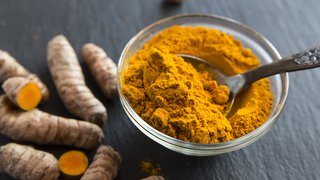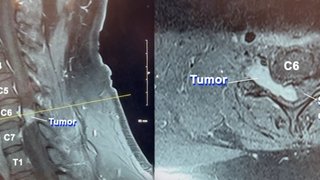10 alternative back pain treatments to try before choosing surgery
September 20, 2018

If you deal with back pain, you know it can make you feel miserable. Whether it’s persistent low back pain or spasms, an aching neck, or sciatic nerve pain shooting down your legs, chronic back pain can sideline you from work and your favorite activities.
Unfortunately, back pain is quite common. Eight in 10 people deal with some type of back pain during their lives. Low back pain in particular is responsible for 2.6 million visits to the emergency room each year and is the leading cause of disability worldwide.
Despite a wealth of research in recent years about how to treat back pain, too many patients still receive unnecessary and often excessive treatment. Instead of being urged to continue to work and stay active, which has been shown to be effective, patients often are told to take time off to rest, referred for scans and surgery, and prescribed painkillers, including opioids.
Fortunately, there are many alternative treatments for back pain, many of which are easy to do at home and affordable, with no doctor’s prescription necessary.
Try these tips to relieve back pain without surgery
1. Eat an anti-inflammatory diet
The foods we eat – and how much – can prevent and reverse a host of health conditions, including some types of back pain. Inflammation is your body’s natural response to protect itself from harm and is a known cause of back pain. Studies have suggested that an anti-inflammatory diet can be just as effective at treating back pain as nonsteroidal anti-inflammatory drugs (NSAIDs), such as aspirin or ibuprofen.
Foods that fight inflammation include:
- Brightly-colored fruits and vegetables, such as carrots, beets, sweet potatoes, blueberries, oranges, strawberries, and tomatoes
- Fatty fish, such as salmon, sardines, and mackerel
- Green, leafy vegetables, including spinach, kale, collards, and broccoli
- Healthy, monounsaturated fats, such as avocado, olive oil, and canola oil
- Nuts, including almonds and walnuts
- Seeds, such as chia, sunflower, and pumpkin
Be sure to avoid foods that can promote inflammation, including fast food, processed foods, and foods that are high in saturated fat and refined carbohydrates.
2. Get enough calcium (but not too much)
Calcium is key for strong teeth and bones, and getting enough (along with vitamin D) can relieve back pain caused by conditions that affect bone mass and strength, such as osteoporosis.
Depending on age, most adults should get between 1,000 and 1,200 mg per day of calcium and between 600 and 800 international units of vitamin D per day. Most patients shouldn’t get more than 2,000 mg of calcium a day because too much calcium can cause heart problems and increase the risk of bone fractures.
Calcium-rich foods include:
- Canned sardines and salmon with the bones
- Dairy, such as plain yogurt, cheese, and milk
- Green, leafy vegetables, such as broccoli and bok choy
- Soybeans and tofu
If you find it challenging to get enough calcium in your diet, talk to your doctor, who can prescribe a calcium supplement or refer you to a registered dietitian for nutrition recommendations.
3. Achieve a healthy weight
More than 70 percent of people in the U.S. are overweight and nearly 40 percent are considered obese. Carrying extra weight can significantly strain your back muscles and spine.
Losing weight can be difficult; however, doing so can help control your back pain, prevent the condition from getting worse, and even potentially eliminate the need for pain medication or surgery. If you need help losing weight, request an appointment.
"There are many alternative treatments for back pain, many of which are easy to do at home and affordable, with no doctor’s prescription necessary."
– Carlos Bagley, M.D.
4. Consider acupuncture
Acupuncture is a technique in which tiny needles are inserted into the body to stimulate specific points, or energy channels, and is thought by some patients and doctors to relieve back pain.
Although there isn’t enough information yet to recommend clinical practice guidelines, acupuncture is worth a try. Some studies, such as a 2013 meta-analysis in the journal Spine, suggest that acupuncture might be an effective therapy for certain types of back pain.
5. Ask your doctor about biofeedback
In recent years, biofeedback – a type of mind-body technique that uses electrical sensors to help you make subtle changes in your body – has grown in popularity as an effective way to manage back pain. A February 2017 meta-analysis suggested that biofeedback could reduce the intensity of back pain and muscle tension, both as a standalone treatment and when combined with other treatments.
6. Practice mindfulness
Mindfulness and meditation are well-known therapies to relieve stress and anxiety. However, some research suggests mindfulness might reduce the intensity of low back pain and improve back function in the short term.
7. Skip the stilettos
High-heeled sandals, pumps, and stilettos might be fashionable but can push the lower back, spine, and hips out of alignment, which leads to muscle overuse and back pain. Even shoes with platform or block heels can be bad for your back over time.
If you’re not willing to part with your shoes, try to avoid wearing them for long periods of time. You could also choose lower heels, avoid pointy toed-shoes that squish the feet into an awkward position, and use gel or padded inserts to reduce the impact on your hips and spine.
8. Practice yoga
Regardless of the type and severity of your back pain, yoga can significantly reduce your symptoms. Some patients are able to avoid pain medication and surgery altogether. According to a July 2017 study in the journal Annals of Internal Medicine, patients with chronic back pain were less likely to take pain medication after participating in a 12-week yoga practice, which in this study was comparable to the results of patients who participated in physical therapy.
9. Move more
You might be tempted to take a break from all physical activity when your back hurts, but doing so actually can make the pain worse. For many patients, a personalized combination of strength training exercises focused on the core (the abdominal and back muscles), flexibility exercises, and aerobic activity can effectively prevent and control chronic back pain:
- Core strength exercises can provide additional support to the lower back, improving posture and reducing strain on the spine.
- Flexibility of the muscles and ligaments in the back increases your range of motion and improves back function.
- Aerobic exercise can increase blood flow and nutrients to the tissues in the back, speeding up healing and reducing stiffness that can lead to back pain.
10. Quit smoking
Surprised? Smoking inhibits blood flow and prevents tissue throughout the body from getting oxygen and nutrients, which can cause the spine and back muscles to weaken. The result: chronic back pain.
When you’re ready to quit smoking, talk to your doctor about tools to quit, such as prescription medications or nicotine gum or patches. Also, consider a nicotine cessation program, which, in combination with medication, has been shown to help patients quit tobacco for good.
When it comes to treating back pain, surgery should be reserved only for patients with severe conditions or when more natural treatments don’t work. For the majority of patients, lifestyle changes and alternative therapies can help keep back pain at bay over the long term.
Stay on top of health care news. Subscribe to our blog today.










